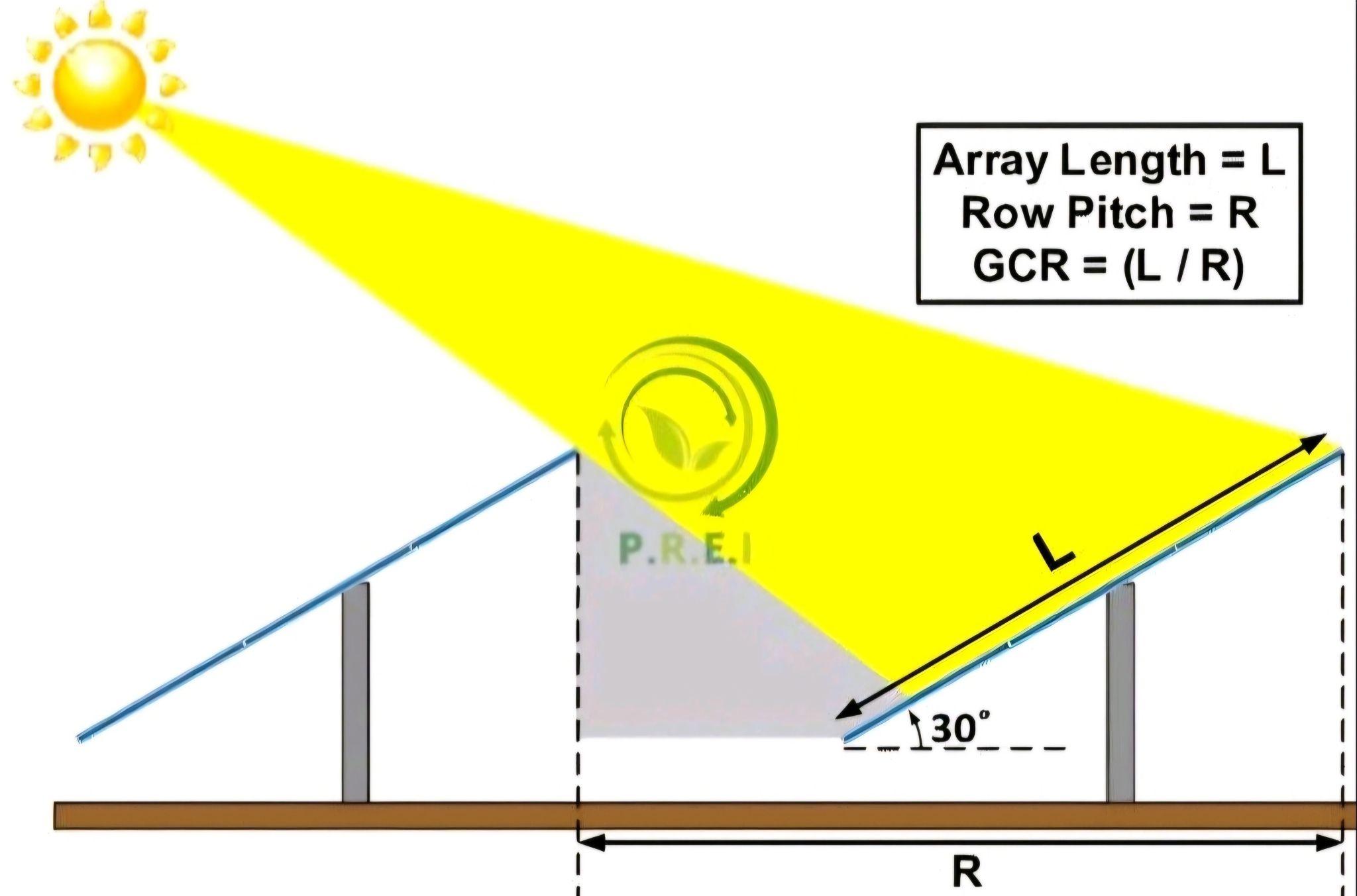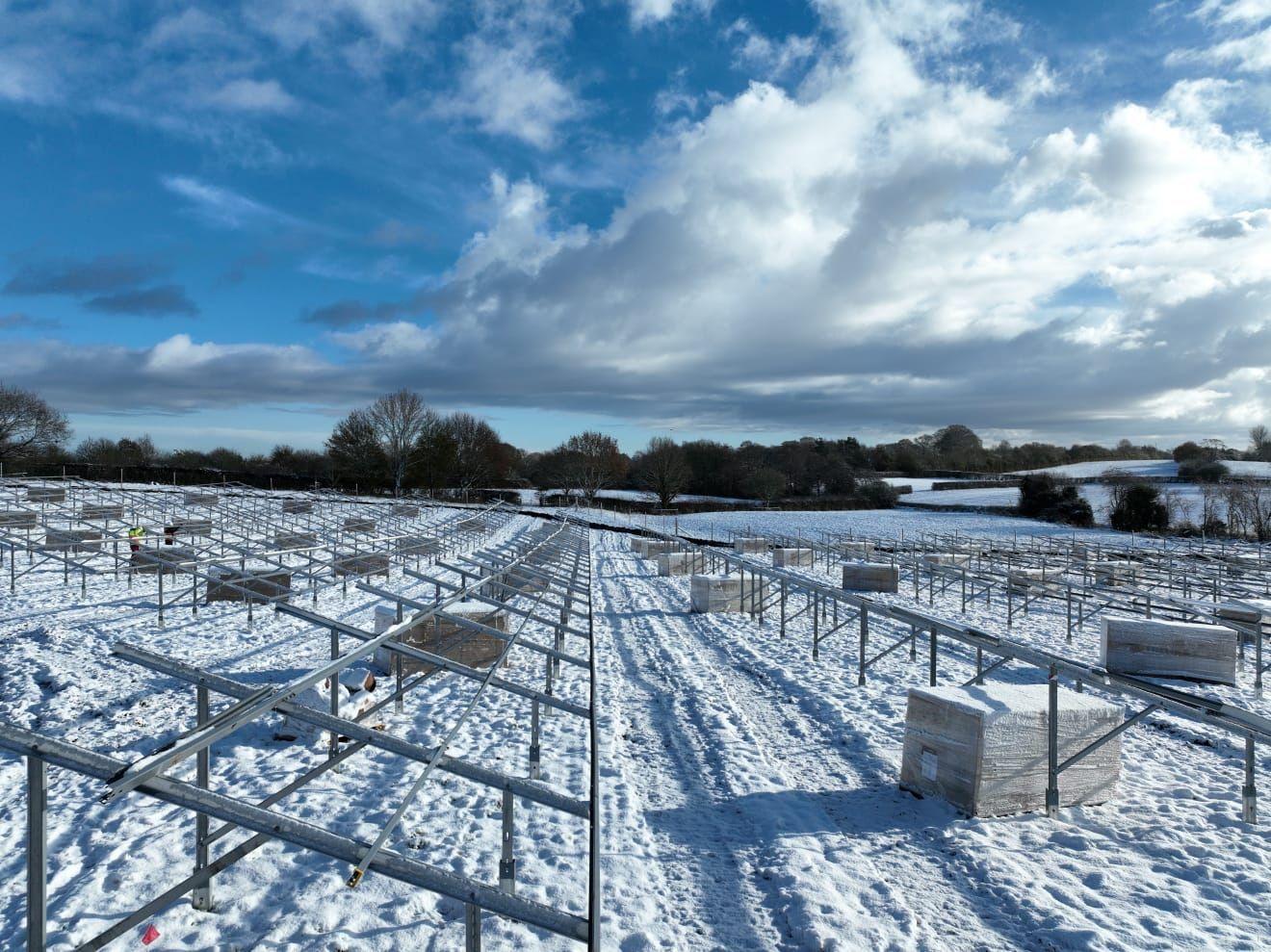The Ground Coverage Ratio (GCR) is a key factor in the design and installation of photovoltaic systems. GCR refers to the ratio of the total area covered by solar panels to the total land area used for installing these panels. A higher GCR allows for the installation of more solar panels within a given land area, thereby increasing the overall energy output of the system. However, it’s important to note that a high GCR may lead to shading issues, which can reduce the efficiency of solar panels. Therefore, when designing photovoltaic systems, it is essential to find a balance between GCR and the appropriate spacing between the panels to ensure maximum energy production and efficiency.

Factors Influencing GCR
- Local Climate – Climate conditions directly affect the efficiency of solar panels. Cloudy or rainy regions may require larger spacing to reduce shading and maintain efficiency.
- Topography – The undulation and slope of the land can affect how solar panels are installed and spaced. Flat terrain is generally more suitable for higher GCR, whereas rugged terrain may require more spacing to avoid shading issues.
- Available Land – The size and shape of land restrict the number and arrangement of solar panels. Limited land area may force designers to opt for a higher GCR to maximize energy output.
- Solar Radiation – The intensity and distribution of solar radiation determine the optimal tilt angle and spacing of solar panels. Regions with lower latitudes typically receive stronger solar radiation, allowing for a higher GCR.
- Wind Speed and Temperature – In conditions of high wind speed and temperature, suitable spacing can aid in heat dissipation and reduce the impact of wind pressure on the panels, improving system stability and longevity.
- Vegetation and Obstacles – Nearby vegetation and buildings may cause shading, affecting the efficiency of solar panels. Designers need to account for these factors to ensure adequate spacing between panels to avoid shading issues.
Photovoltaic System GCR Optimization Strategies
- Appropriate Panel Spacing – Determine the optimal panel spacing through calculations and simulations to minimize shading and maintain efficient energy conversion. Common formulas include:GCR = Total Panel Area / Total Land AreaShadow Spacing = Panel Height / tan(θ)
- Consider Topography and Slope – For projects on hills or slopes, select appropriate tilt angles and installation methods to fully utilize the terrain and reduce shading issues.
- Use High-Resolution Satellite Imagery – Leverage high-resolution satellite imagery and terrain data to accurately assess solar radiation and shading scenarios, optimizing GCR.
- Combine Local Policies and Regulations – Understand and comply with local photovoltaic policies and regulations to ensure designs meet requirements and avoid unnecessary legal risks.
- Integrate Economic and Technical Considerations – Aim to reduce investment costs while satisfying technical requirements to achieve optimal economic outcomes, such as choosing cost-effective panels and mounting materials and optimizing electrical system design.
International Case Studies
- Solar Farm in Queensland, Australia – Located in a sunny region, the project team determined the optimal GCR (approximately 0.6) through detailed sunlight analysis, ensuring adequate spacing to reduce shading while maximizing land utilization.
- Rooftop PV System in Bavaria, Germany – This project, installed on urban rooftops, opted for a higher GCR (about 0.8) due to limited land. Through precise shading calculations and optimized panel layouts, the project successfully avoided shading issues and achieved high energy output.
- Desert PV Station in California, USA – Situated in a desert region with abundant sunlight, the design team chose a lower GCR (approximately 0.4) to ensure sufficient spacing between panels to minimize the impact of wind and sand while maintaining high efficiency.
- Agricultural PV Project in Southern France – This project combined agricultural production and photovoltaic generation, with the design team selecting a moderate GCR (approximately 0.5) to ensure crops received enough sunlight while maximizing photovoltaic output through accurate sunlight simulations and terrain analysis.

Example Calculation Formulas
- GCR Calculation FormulaGCR = Total Panel Area / Total Land Area
- Shadow Spacing Calculation FormulaShadow Spacing = Panel Height / tan(θ)
- Panel Spacing OptimizationMinimum Spacing = (Panel Length × tan(α)) / (tan(β) – tan(α))
Conclusion
In summary, GCR plays a significant role in the design of photovoltaic systems. Designers need to consider multiple factors to determine the optimal GCR value. Through reasonable design and optimization, it is possible to achieve maximized energy output on limited land while ensuring the efficient operation and long-term stability of the system. International case studies indicate that different geographical and environmental conditions necessitate varying GCR values. Project teams should combine specific project requirements with scientific calculation methods and advanced simulation tools to identify the most suitable GCR value. This not only enhances system performance but also reduces costs, contributing to sustainable development.